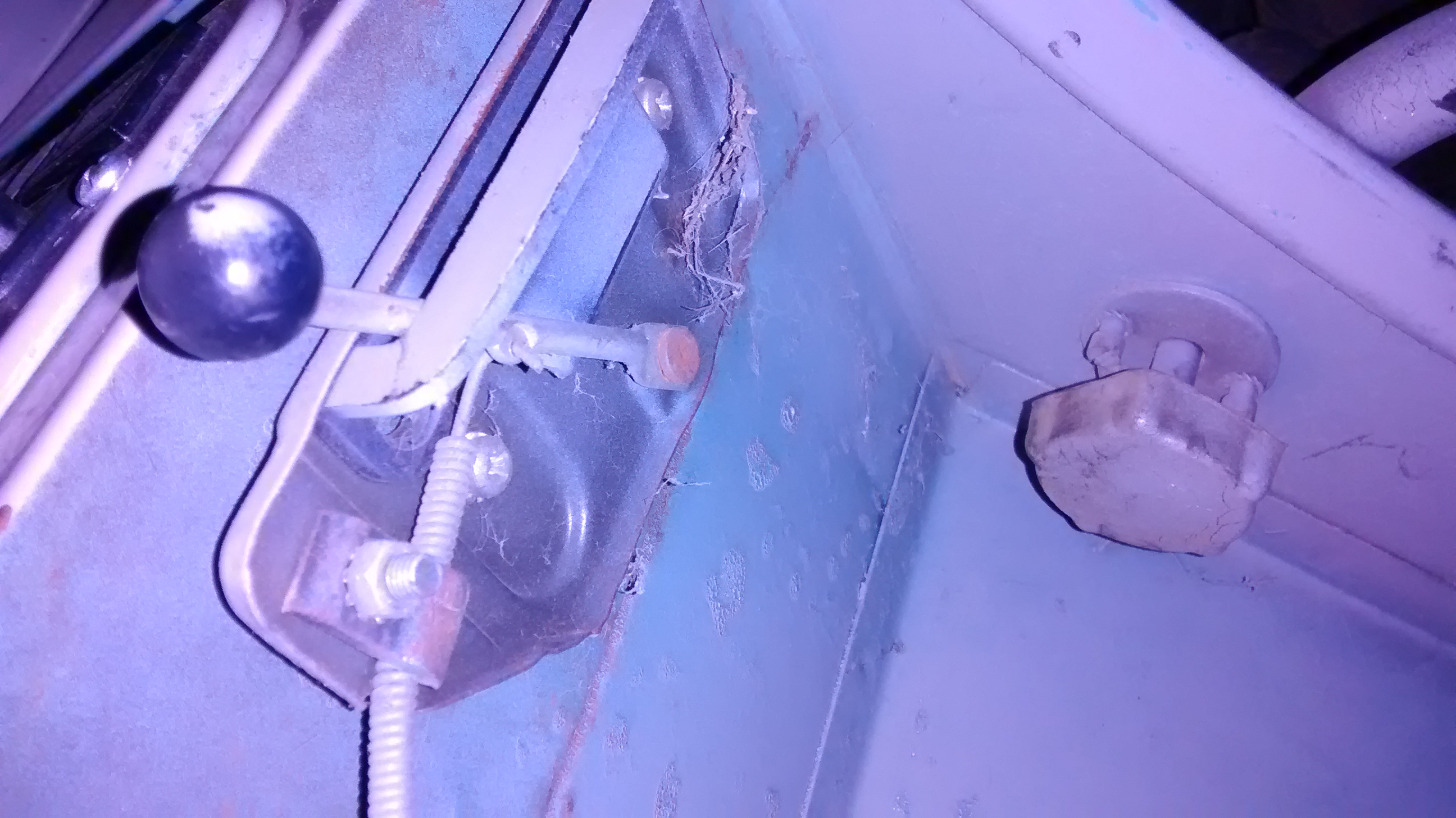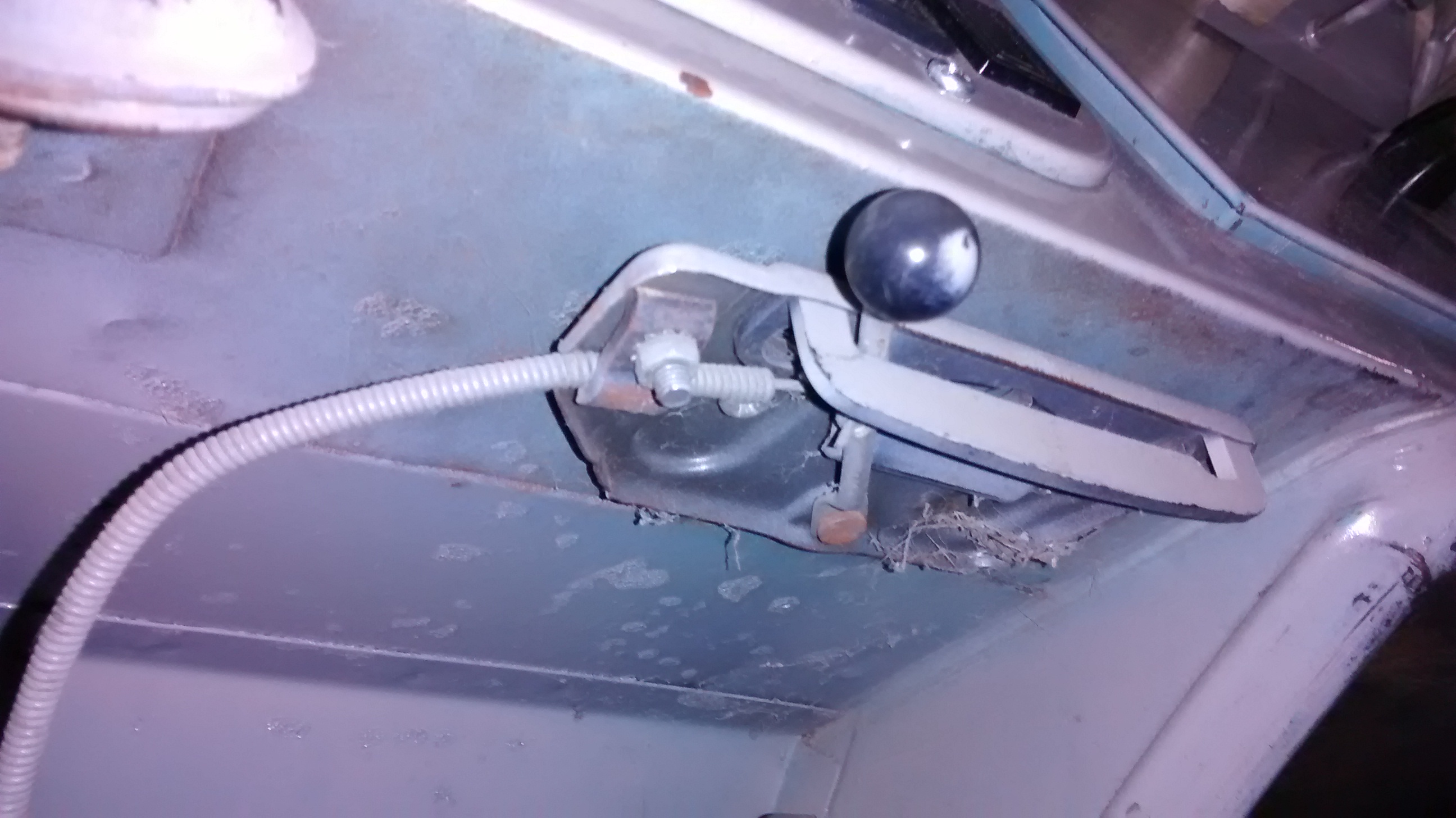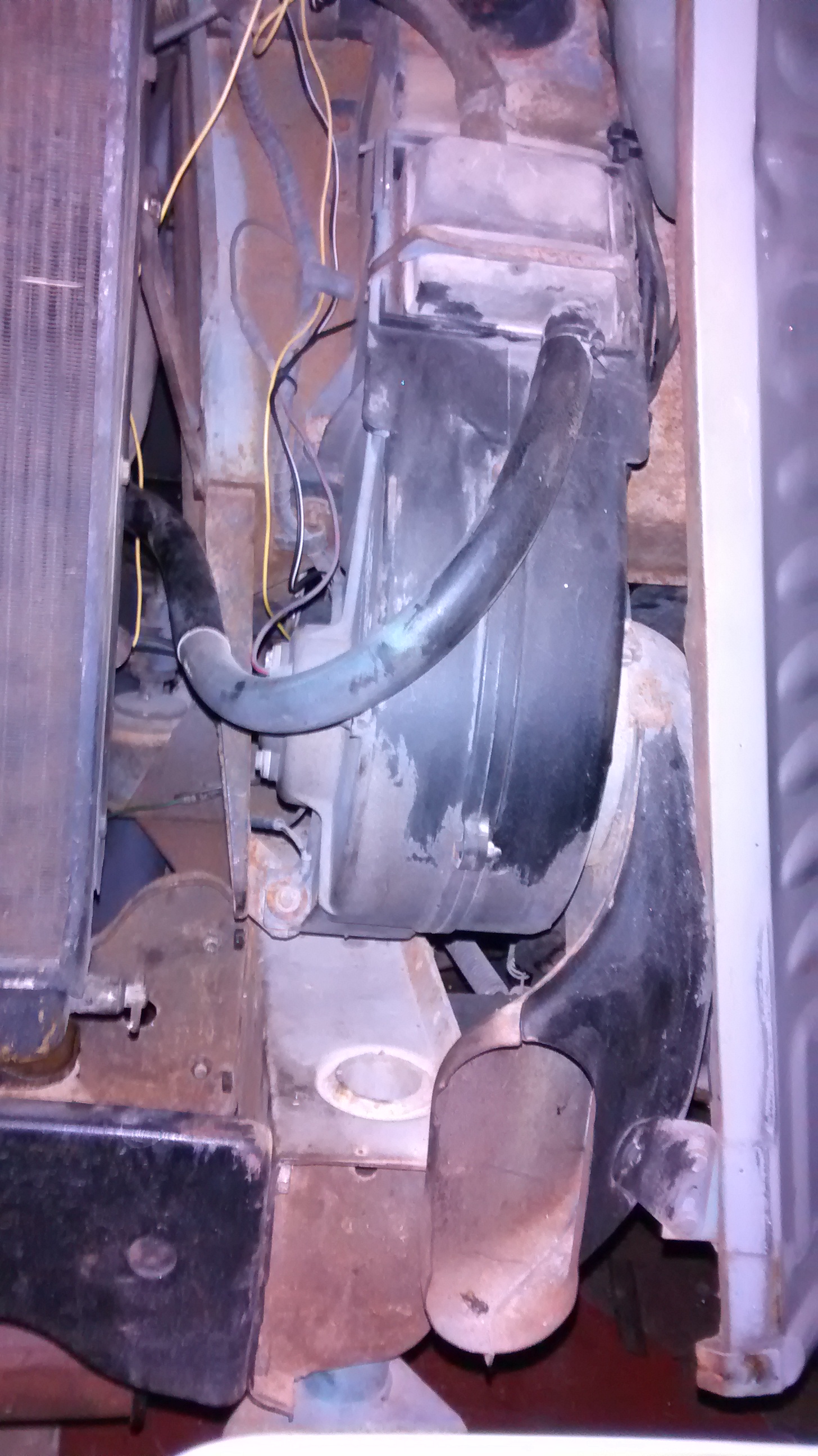CITROEN H VAN HEATER OPERATION AND UPGRADE
The H van heaters in standard form are not the most powerful but understanding how to operate them is a start. Vans prior to 1962 were rarely fitted with a Heater, but we have an easy fit option for these owners if they require one.
Under the 'dashboard' by the Drivers right leg on a post 1962 van can be found a round knob that controls the Heater water temperature, see photo below :

This knob controls the flow of the Hot water from the engine through the Heater Matrix, turn it Clockwise to shut off the Hot water Flow or Anti-Clockwise to increase Heater warmth.
Air being blown, by the Fan Motor, through the Heater Matrix is then directed to the Van. The Fan motor is controlled via a push button on the Dash.
The Air Distribution Lever, see above, then distributes the Air either up to the Windscreen (lever to the right) or both Windscreen and down to the Feet (lever to the left).
Another photo of the Air Distribution Lever in the recommended Windscreen and Feet position :

When the heater knob is turned either on or off the system may take some time to react. For example if the Water flow valve Knob is fully open and is then closed it will stop any more hot water flowing through the system but the Hot water already in the Matrix will continue to heat the air flowing through for up to 10 minutes.
The Heater Matrix is quite small so the amount of Air it can Heat is not great. The fan motor is also not very powerful.
A standard Heater Matrix :

We have an uprated Heater unit (looks and fits similar to the original) with a 50% bigger Heater Matrix and a more powerful Blower motor that together will give about 3 times the Heat output of the old heater unit.
Demisting changes from Dismal to Brilliant.
Our heater is a rework of the standard item with a bigger heater Matrix plus an additional 85cu/ft per minute fan. The volume of an average van is about 400 cu/ft so our upgrade can move enough air to change that in the van inside 5 minutes. We take the standard unit and uprate the internals, fits in exactly the same way it came out.
To get the most from your existing Heater.
Start by making sure your Heater unit is working correctly. It is not unusual for the Heater assembly to be used by Mice and Birds so check it is Clear using the information below.
Get the engine hot and open the Heater flow control valve, anticlockwise. The top of the Heater matrix should get warm. If it does not you probably have a seized flow control valve.
Turn off the engine and set the Air Distribution Control lever to the right.
Operate the Blower/Fan and listen for the fan operating.

Above can be seen a picture of a H van standard heater assembly in situ, with the Air intake at the bottom leading into the centrifugal Blower.
To the top right of the photo can be seen the upper part of the Heater Matrix with the hose taking the Hot Water from the Engine into one side and another hose carrying it back out the other via the Flow Control tap just out of sight. It is not unusual to see the heater Matrix has been bypassed because of leaks/failure. We can supply good second hand ones or brand new high flow uprated units.
The Matrix is just held in by a metal clip running across the top, enabling the Matrix to be removed for Cleaning. Handle this very, very carefully by the sides, do not touch the fins. To remove it, carefully flip up the spring clip and withdraw the Matrix towards you out from the housing. Clean any debris in the housing, the unit is easily removed. When refitting ensure the 'sealing foam' is good otherwise warm air will leak out. Just a small gap makes a big difference.
With the Matrix removed you should be able to look down to see the 'drum' style centrifugal fan. Turn on the ignition, operate the fan button and check it blows Air.
If everything looks normal but the heater matrix never gets more than warm you may have a faulty Engine Thermostat which sits inside the radiator top hose just above the Water Pump outlet. The Thermostat is unusual in that it does not have it's own housing but literally sits inside the top Hose. They are often stuck (or missing altogether) preventing the Engine from getting up to temperature so the Water from the engine is never more than warm. This leads to other issues like poor running, high fuel consumption, excessive Engine wear, etc. so should be addressed ASAP.
CLICK HERE to return to the HOME page.